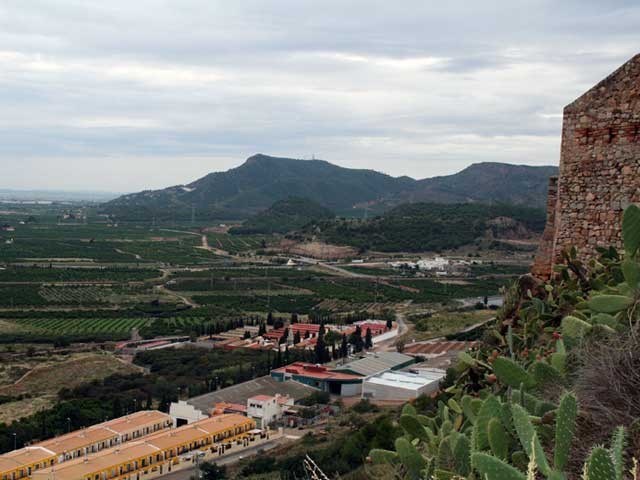The auto-piste was wide and immaculately kept. At frequent intervals, emergency telephones were installed at the roadside for use in the event of a breakdown. Tollbooths were plenty. The smooth strip of pavement entered the mountainside via long, winding tunnels as often as it soared above it on lofty bridges spanning unlikely distances. Plentiful and well appointed, the rest stops were sparkling and expansive oases of gas pumps and showers, hot meals and coffee. This was the mother of highways for the serious traveler, equipped with every amenity a road tripper may desire.
Dubiously, I eyed the ticket handed me by the bored Spaniard in the tollbooth. The language barrier kept me from inquiring as to how much driving this particular route might be costing us. Already our pockets were lighter from paying hefty tolls.
But we were making good time! We were speeding down Spain’s east coast from Barcelona to the country’s mountainous southern region, the Sierra Nevada. While I was impressed with the highway, the landscape bore the scars of industry, and along the coast continuous mass development battled for space at the seafront. The country seemed to be rushing headlong into modernity, excavating its mountains to extract their wealth and heedlessly lining its beaches with clusters of skyscrapers. Sprawling groves of oranges provided some colour to an otherwise uninspiring route.
Sagunto looked to be a promising place. Not as a destination, but certainly for an overnight stopover. A crumbling castle brooded on the hilltop overlooking the town and the quiet main street was flanked by smart new brick sidewalks adorned with recently planted palm trees. An authentic Spanish town amid a sea of industry and orange groves, Sagunto seemed to be putting its best face forward. Happy to be off the road, we procured a room on the promising main street and optimistically set out to explore our home for the night.
The castle had been left to its own devices, crumbling quietly at its own pace. Its foreboding outer walls were overgrown with imposing cacti, and broken glass littered what was left of a trail. With so many castles in Europe, not all can be maintained for the world to see. This was an authentic ruin, requiring no ticket to enter. We gingerly poked about, enjoying the vantage the hilltop offered, smoke-belching factories and farmland spread out before a distant sea.
At the foot of the hill, cobblestone alleys wound their way around the old buildings, where we lost ourselves in a tangle of brick and stone. Our minds on a meal, we sought out the main street where we hoped to find a restaurant, perhaps a patio and some authentic Spanish fare.
Sagunto never failed to surprise. Flanking the lovely wide sidewalks, beneath stately palms, one might picture sidewalk cafes full of contented diners and restaurant patios shaded by colourful umbrellas. Instead, we found establishments of a different sort. Auto mechanics and shops selling lawnmowers, chainsaws and the like were the main features of Sagunto’s curious main drag. The occasional diner was of a dubious nature, where tired looking food was displayed in grimy cases beneath a veil of cigarette smoke. Patrons chain-smoked and eyed us curiously as we gingerly poked our heads in the front door, weighing our options.
Predictably, we sought out a grocery store and returned to our hotel, pondering the unusual concept of placing a city’s industrial area in its landscaped and picturesque heart.
On the road again. Torrential downpour and massive queues of slow moving trucks. This was clearly a major transport route, cranes and construction being the main features. It was a significant relief when we turned inland and the land grew steeper, the road narrower. Things slowed down. Small towns were nestled in quiet mountains. We ascended. The air grew cooler. Industry disappeared. This was the Spain we were seeking, had expected — not the frantic development that seemed to follow the coast, the belching factories and massive excavations.
The whitewashed towns of the Sierra Nevada peaked out from behind hillsides of stepped farmland clad in grapevines and fruit trees. Torrents of fresh rainwater flowed down steep cobblestone streets and lofty churches gazed serenely upon quiet villages, seemingly untouched by time. The fog rolled lazily about, obscuring the landscape, leaving some of the view to the imagination. Bright bushels of peppers were hung outside to dry in the fresh, clean air.
Factories and farmland, crumbling castles and orange groves, super highways and villages of yesteryear, the old and the new seemed to be battling for space in modern Spain. Nearly 40 Euros in highway tolls later, I can only hope that the quaint mountain towns of the Sierra Nevada remain timeless.




